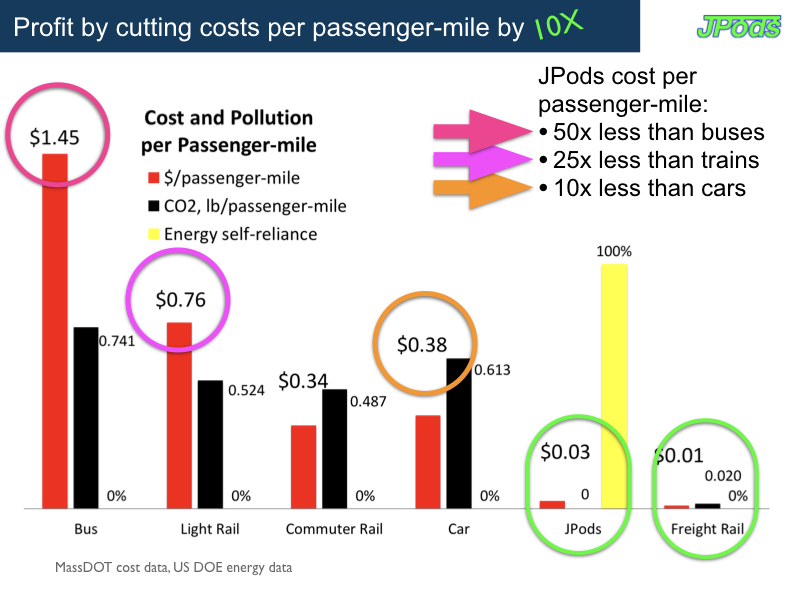Who pays for Building the JPods Network
JPods LLC and the Texas Mobility Company LLC pay to build our solar-powered mobility networks.
- We are investors, not vendors.
- We are taxpayers. We pay 5% of our gross revenues to use the public Rights of Way.
- We are investing in Texas to provide solar-powered mobility networks that combine:
- JPods Networks are 10 time to 50 times less expensive per passenger-mile that cars and buses.

Capital Flow:
Because of a century of centrally plan infrastructure, it surprise Americans to think that infrastructure should be privately funded. But building of the Internet and Transcontinental Railroads provide case studies in why infrastructure should be privately funded.
The book Great by Choice, Uncertainty, Chaos, and Luck - Why Some Thrive Despite Them All explains the processes required:
- "20-mile marching", incremental, steady, disciplined, step by step efforts.
- "Fire bullets, then cannon balls", tinkering by starting small and iterating relentlessly.
The book Nothing Like It in the World, is a case study on how private capital funded building the railroads. The following graphic illustrates three types of capital are used by two different types of companies:
- Local Mobility Companies® (LMCs) mission is to own and operate the JPods networks to meet local needs. LMCs have two tasks:
- Gain Rights of Way access (Solar Mobility Act and/or Franchise Contract with 5X5% Performance Standard)
- Profit by serving the fare box payers with greater value than the cost to compete.
- Master Mobility Companies® (MMCs) construct the networks defined by the LMCs. MMCs operate with very focused requirements:
- Repay construction capitial every 12 months by selling completed networks to LMCs to operate.
- From survey to certification of rail should take no more than 9 months once the manufacturing base is ramped to scale.
- Complete 3 to 10 miles of networks per day per crew, matching the pace the Transcontinental Railroads were built in the 1860s.


